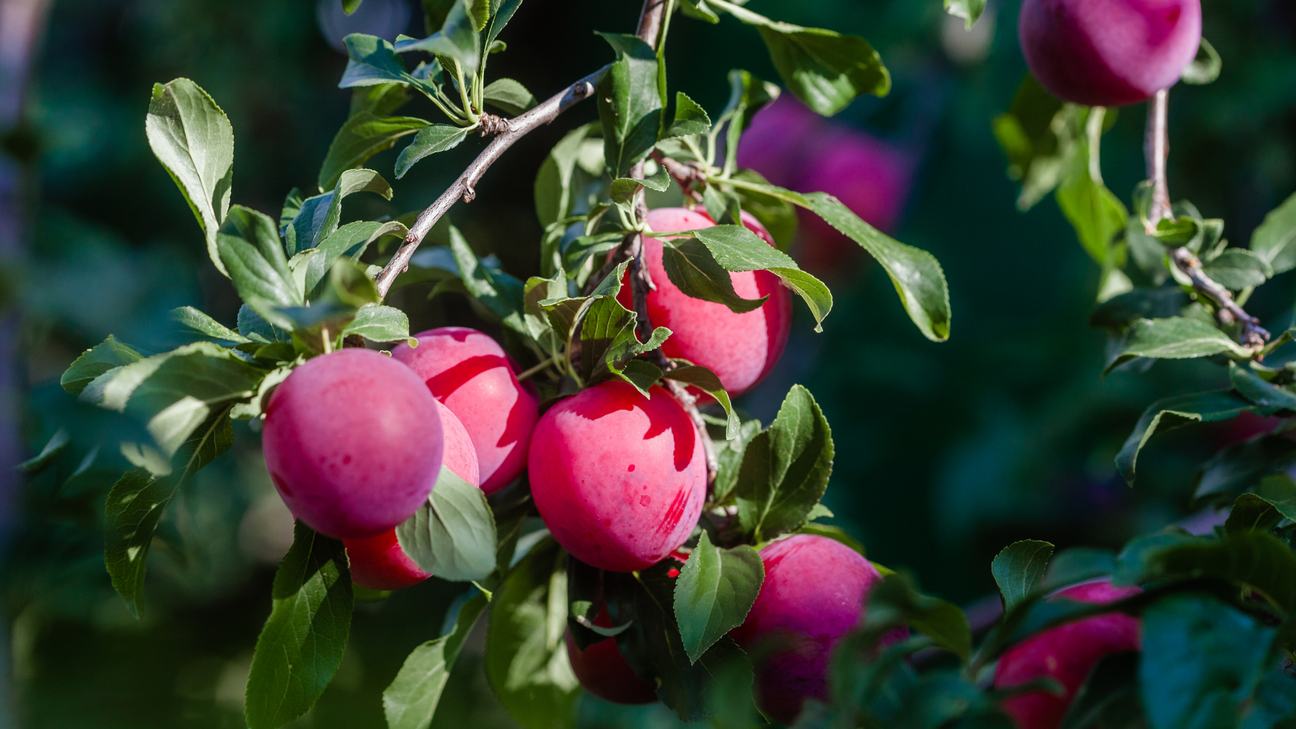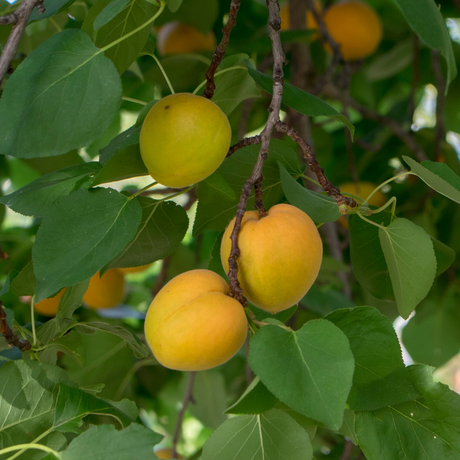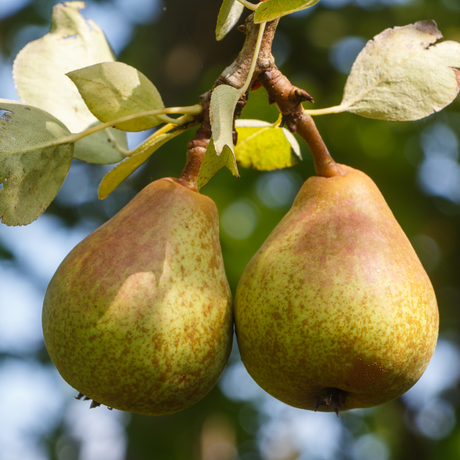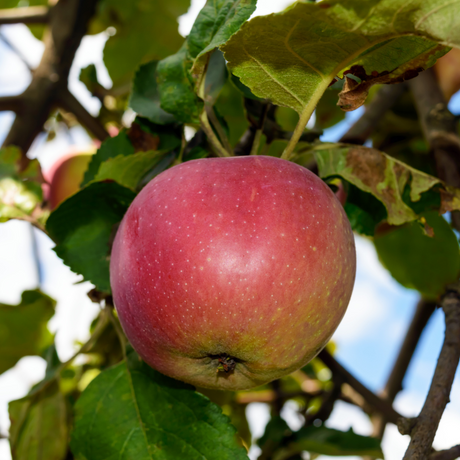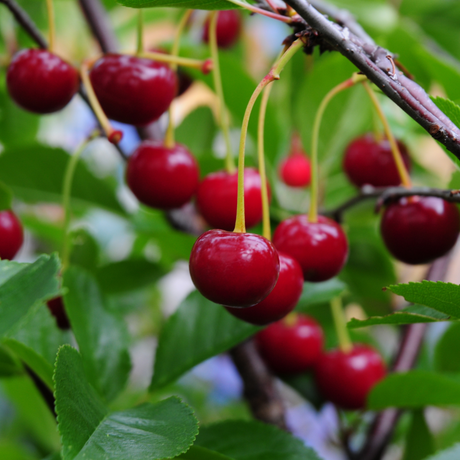Low-stemmed plum tree 'Opal' BIO
€27,72Unit price /UnavailableLow-stemmed plum tree 'Hauszwetsche' BIO
€27,72Unit price /UnavailableLow stem plum tree 'Reine Claude Verte' BIO
€27,72Unit price /UnavailableLow-stemmed plum tree 'Mirabelle de Nancy' BIO
€27,72Unit price /Unavailable- €32,68Unit price /Unavailable
- €32,68Unit price /Unavailable
- €32,68Unit price /Unavailable
Low-stemmed plum tree 'The Czar' BIO
€27,72Unit price /Unavailable- €32,68Unit price /Unavailable
Plum trees in pictures
In this video, Tom shows the collection of fruit trees for his new garden.
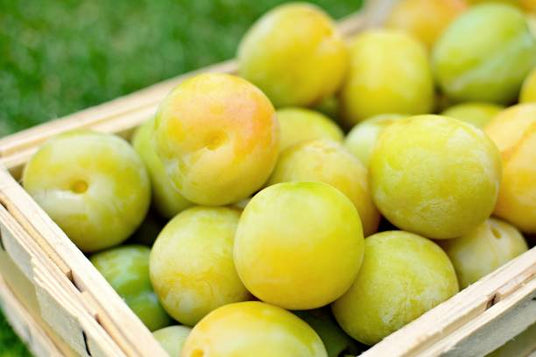
Also read our fruit tree cultivation guide
Our other fruit trees
View allBuy a plum tree: Grow it yourself, enjoy it organically
Buying a plum tree is one of the most rewarding decisions you can make. Especially if you choose a tree that has been grown with care and without artificial means. Our plum trees are organically grown – strong, healthy, and ready for life in your garden. At Plukkers, you can choose from a variety of products, including various types and sizes of plum trees.
Buying plum trees is easy through our webshop, where you'll receive advice on choosing the right tree for your garden. When choosing, consider not only the flavor and type of fruit, but also the ornamental value of the tree: a plum tree is often chosen for its beautiful blossoms and attractive appearance in the garden. And whether you dream of sweet, juicy fruit or prefer a firmer, tangy plum, there's a suitable variety for every picker.
Introduction
A plum tree in your garden? That's such a wonderful choice! Not only will you get those beautiful blossoms in spring that simply bring you joy, but you can also enjoy your own fresh plums in the summer. There are so many lovely varieties to choose from—from the classic Prunus domestica to the popular Prunus domestica Opal—each with its own unique flavor and size. Whether you have a small garden and prefer a compact Opal plum tree, or have the space for a large tree that will give you a generous harvest, there's always a plum tree that suits you. In this article, we'll guide you through everything you need to know about planting, pruning, and caring for different types of plum trees, so you can enjoy your own fresh plums to the fullest.
Why plant an organic plum tree?
Growing your own plum tree means more than just harvesting fruit. You're planting a little joy, life, and flavor in your garden—without fertilizers or pesticides. As a fruit tree, the plum tree not only provides delicious fruit but also contributes to the biodiversity in your garden.
This is what makes organic plum trees so popular:
- Quick results: after just a few years you can pick plenty of plums.
- Strong and naturally resilient: thanks to organic cultivation methods, our trees are highly resistant to diseases.
- Bee-friendly: the blossom in spring attracts pollinators.
- Compact or large: from low-stemmed to half-stemmed – there is always a suitable size.
- For every type of gardener: whether you are just starting out or already have experience.
Which low-stem plum tree varieties suit you?
At Plukkers, you'll find only proven varieties. You can choose from various plum tree varieties, each with its own size and unique characteristics. We also offer self-pollinating plum trees, which produce a large harvest without a second tree and are easy to maintain. For compact gardens, there's also the option of a small plum tree. All our trees are delicious, organically grown, and suitable for Dutch gardens.
Plum tree 'Opal' BIO
This early-ripening tree, the opal plum, treats you to blue plums with an aromatic, full, and sweet flavor. The opal plum is partially self-pollinating and very productive – a great choice for beginners. Harvest time for this variety is usually in July, when the plums are ripe for harvesting. The Prunus domestica 'Mirabelle de Nancy' is a lesser-known variety with yellow fruits that are easy to process.
Plum tree Hauszwetsche BIO
'Hauszwetsche' is a late-ripening plum variety that produces medium-sized, elongated, dark blue fruits with a sweet, aromatic flavour and firm flesh from September to October.
Plum tree 'Reine Claude Verte'
A classic French variety with firm, green plums. The fruit of this plum tree is juicy, aromatic, and has a fresh, sweet flavor. This tree grows vigorously and healthily thanks to organic cultivation.
Mirabelle de Nancy plum tree
'Mirabelle de Nancy' is a mid-early to late-ripening plum variety that produces small, golden-yellow fruits with a sweet, aromatic flavour and juicy flesh from August to September.
Maintenance in a small garden
Do you have a small garden, but are you already craving your own plums? Then I have good news for you: go for a dwarf or half-standard plum tree! These little beauties stay nice and compact, so they fit perfectly in your cozy garden without turning it into a jungle. A dwarf plum tree has its first branches at 50 cm and doesn't grow taller than 150 cm. A half-standard plum tree has branches that start at about 100 cm. A standard plum tree has branches that start at 175 cm, ideal for larger gardens or orchards. And you know what's even better? They're also much easier to care for than a large standard plum tree—no need for ladders or complicated tricks. You just need to prune occasionally (just like you trim your hair, but for your tree), so it stays in good shape and doesn't get too big. For small gardens, the Prunus domestica opal is a real winner: this little guy doesn't need any other plum trees to produce a huge amount of fruit – multifunctional in the truest sense of the word! So even with one tree, you can enjoy a bountiful harvest of delicious plums without your entire garden being overrun with trees.
How to give your plum tree a good start
A little attention and your tree will do the rest.
To ensure your plum tree gets off to a successful start, we recommend using planting soil, tree stakes, and tree ties. This ensures the tree is firmly planted, well-supported, and has the best chance of growth. Also, ensure the graft union of the plum tree remains above the soil level when planting. Plum trees can be planted year-round, provided they are potted.
Location
Place your tree in a sunny spot, or in a partially shaded area if there's enough light, preferably sheltered from the wind. Sunlight is crucial for flavor and growth. Plum trees thrive in full sun and need at least six hours of sunlight per day. Protect young, flowering plum trees from frost with fleece to prevent damage to the blossoms.
Soil
Use airy, nutrient-rich soil. Compost and mulch promote soil life – perfect for organic farming. Plum trees depend on well-drained, fertile soil to prevent root rot.
Water & food
Provide extra water during dry periods. Use organic fertilizer for a healthy tree and a bountiful harvest. Fertilize plum trees annually in early spring with organic fertilizer, such as compost or manure. Do not use artificial fertilizer on plum trees unless there are specific reasons to do so, to maintain the soil's natural balance.
Pruning a plum tree
Pruning plum trees is essential for a beautiful shape and healthy growth. Prune preferably between April and early summer, depending on the flowering period, to maintain shape and vitality. Thinning the fruit after flowering is important to prevent overload and improve the quality of the plums. Fruit thinning also helps prevent rot and enhances the flavor of the plums. Annual pruning is important to maintain an open crown for sufficient light and air circulation. Pruning in the fall can help prevent diseases and keep the tree in good condition. Prune plum trees preferably after harvest to reduce the risk of disease.
Prune after harvest to keep the tree airy and strong. Organic trees require less pruning because they grow naturally.
Pollination
Some varieties are self-pollinating. Others prefer a neighboring tree. Some plum varieties require another plum tree nearby for effective pollination and a higher fruit yield. If you choose self-pollinating plum trees, you can still achieve a bountiful harvest with just one plum tree, because it pollinates itself. Find out what your tree needs.
Harvest and use: Fresh, processed or pickled
You can harvest them from July to September. The plums are delicious eaten fresh, but also perfect for jam, pie, or chutney. You can taste it immediately: this is pure nature.
Pure fruit from your own garden
A plum tree from Plukkers is more than just a tree. It's an organic choice for flavor, tranquility, and seasonal enjoyment. Whether you have a small garden or want to start an orchard – your picking moment starts here.
At Plukkers, you can choose from various sizes of plum trees, including shrubs, standard trees, and espaliers. So you're sure to find the perfect size for your garden.
Browse our selection of organic plum trees and choose your favorite. We'll make sure it arrives firmly rooted.
Conclusion about buying plum trees
You might have a small garden or a large plot, but believe me: a plum tree is truly a gift that keeps on giving. With a little love and attention, a Prunus domestica, like the beautiful Prunus domestica opal, will provide you with delicious fruit for years to come. Will you choose a self-pollinating variety or another well-known plum tree? It doesn't matter, you're guaranteed a bountiful harvest and tons of gardening pleasure. Simply find the plum tree that suits you best and soon you'll be enjoying your own fresh plums, picked straight from the garden. Enjoy!

